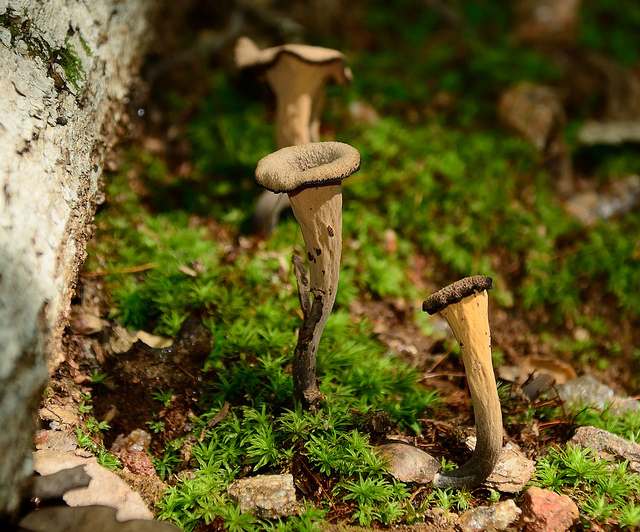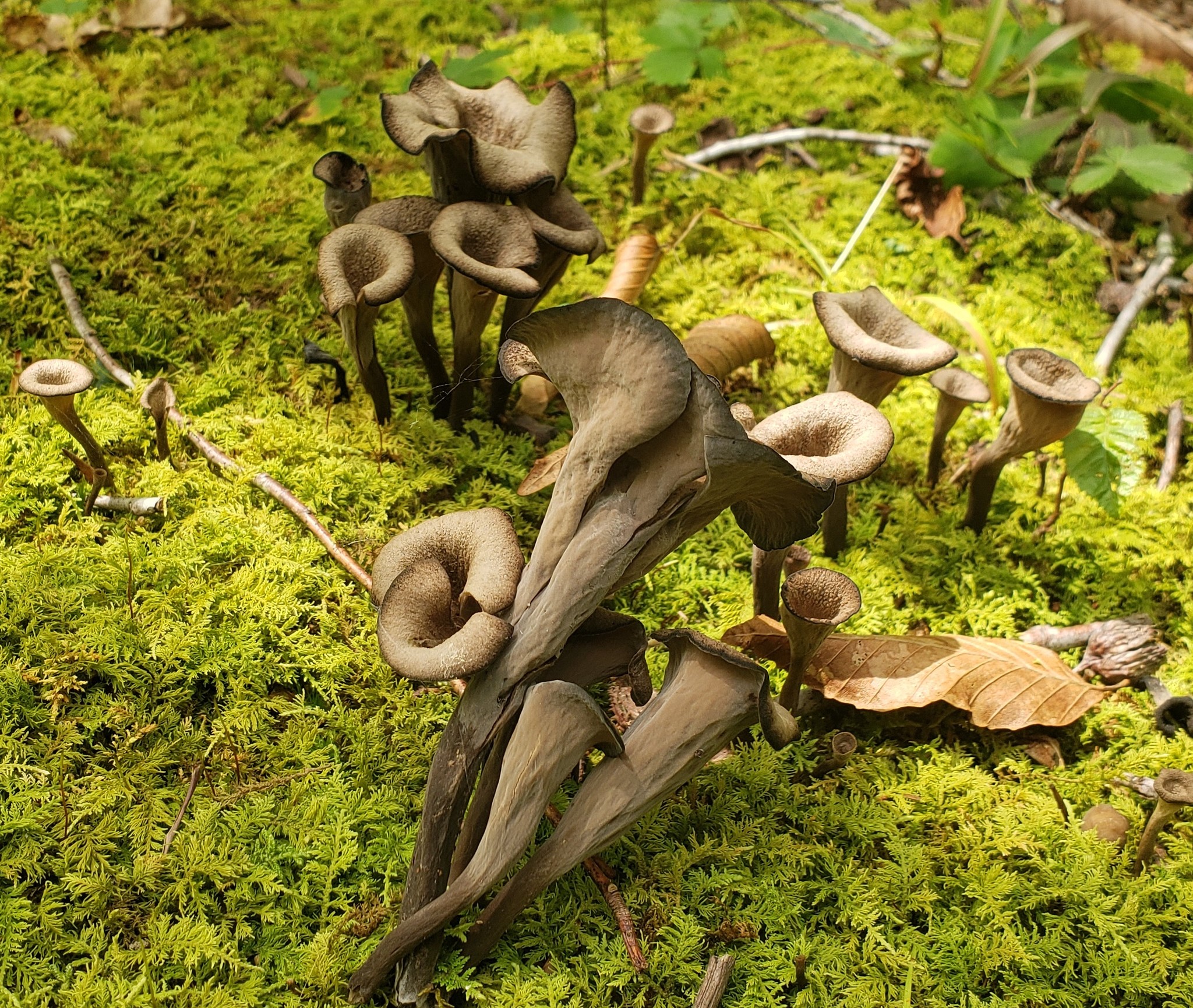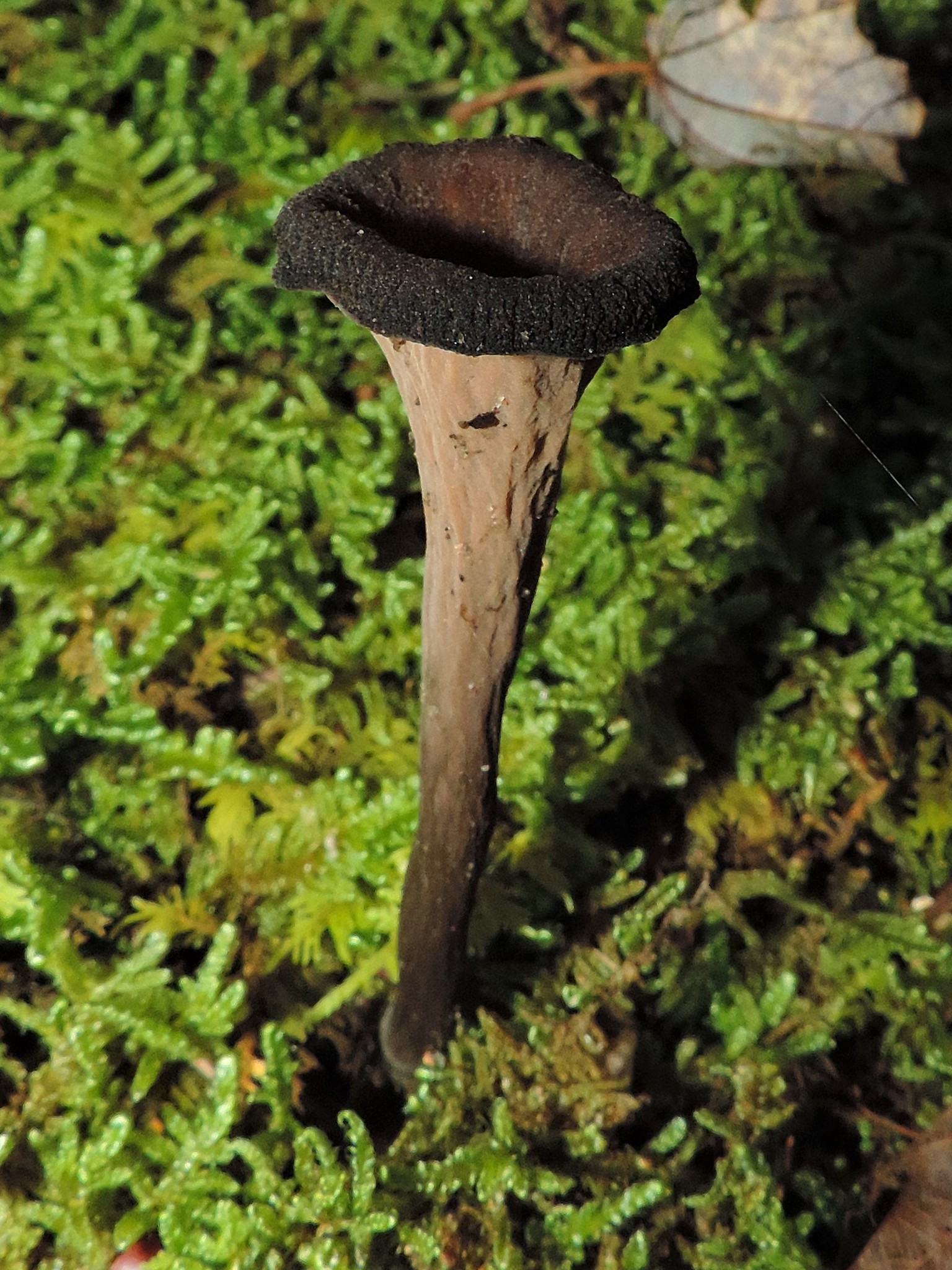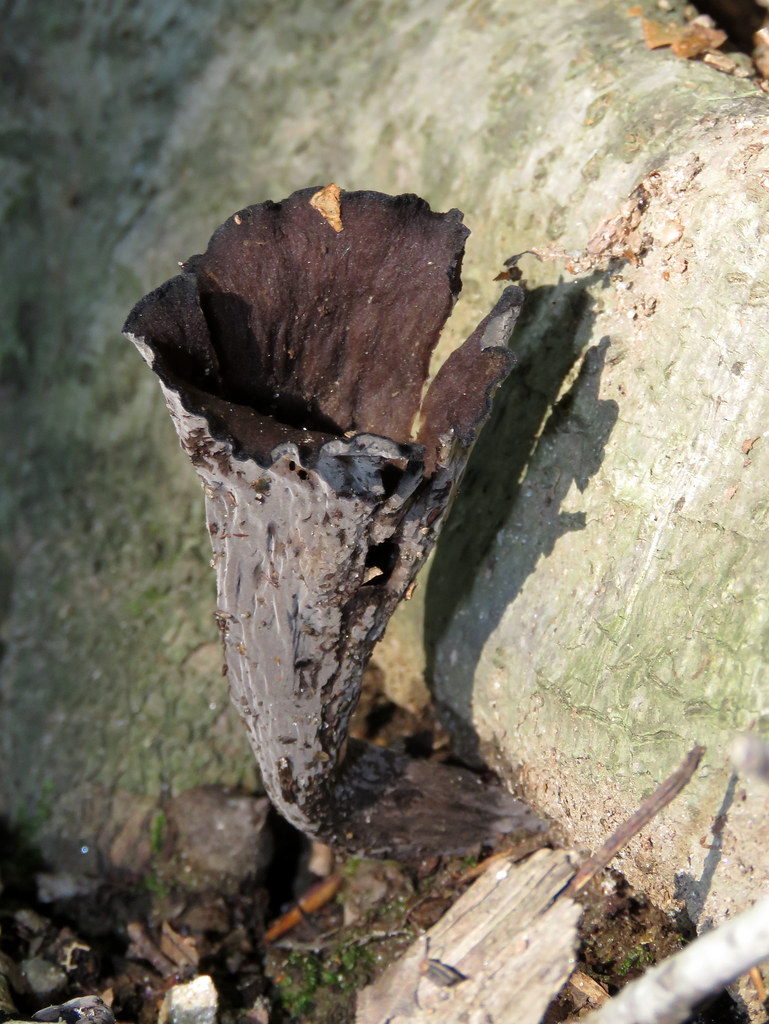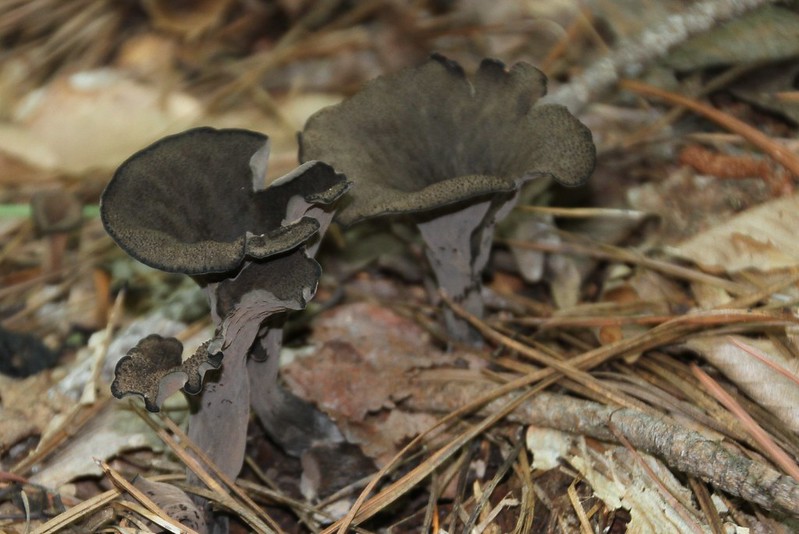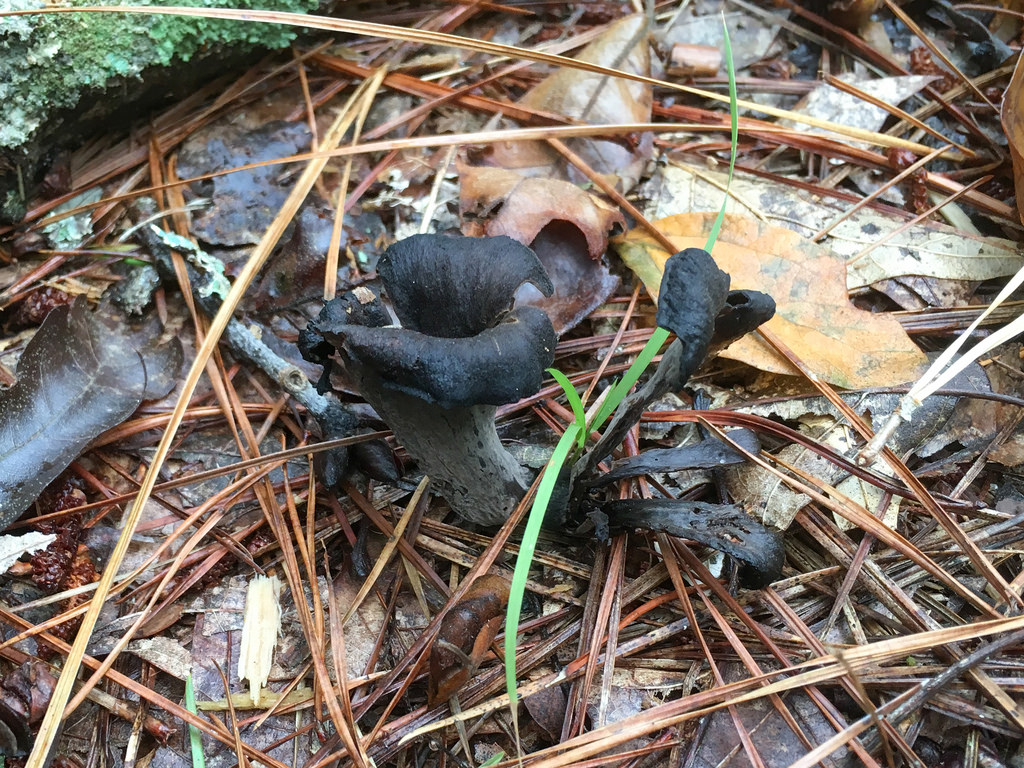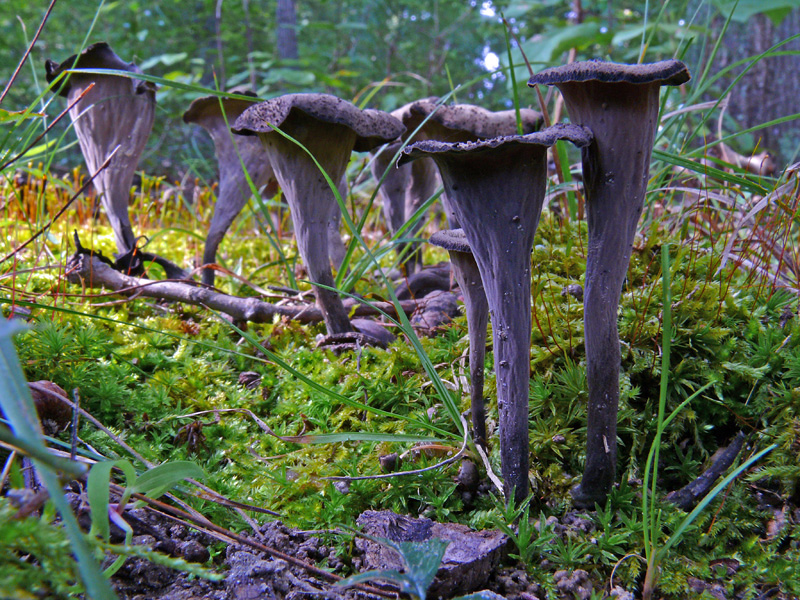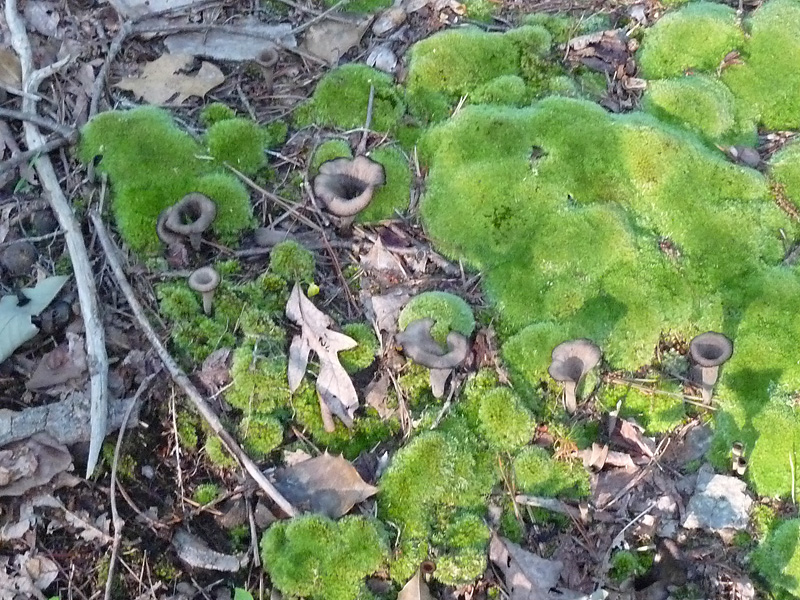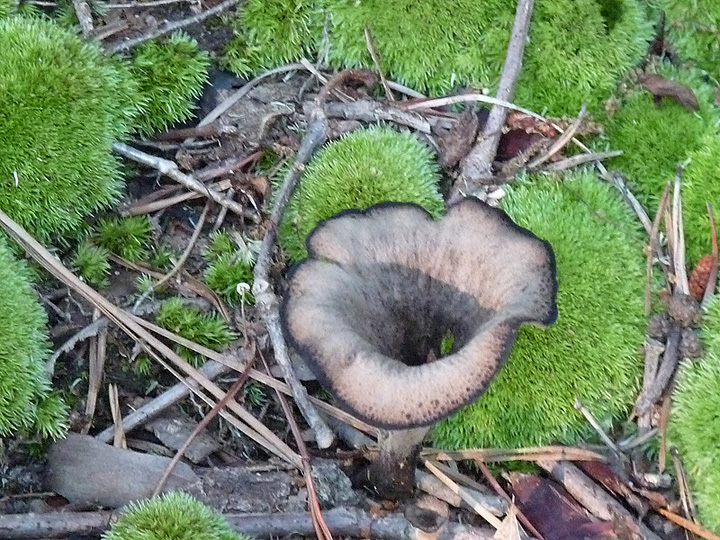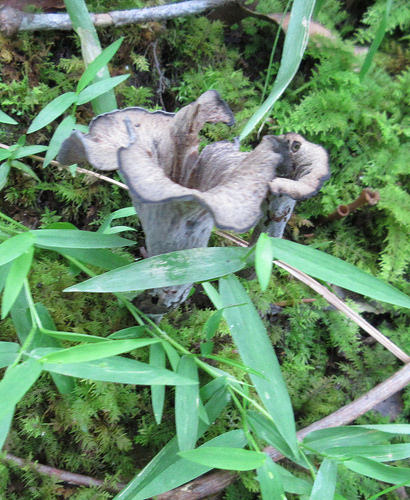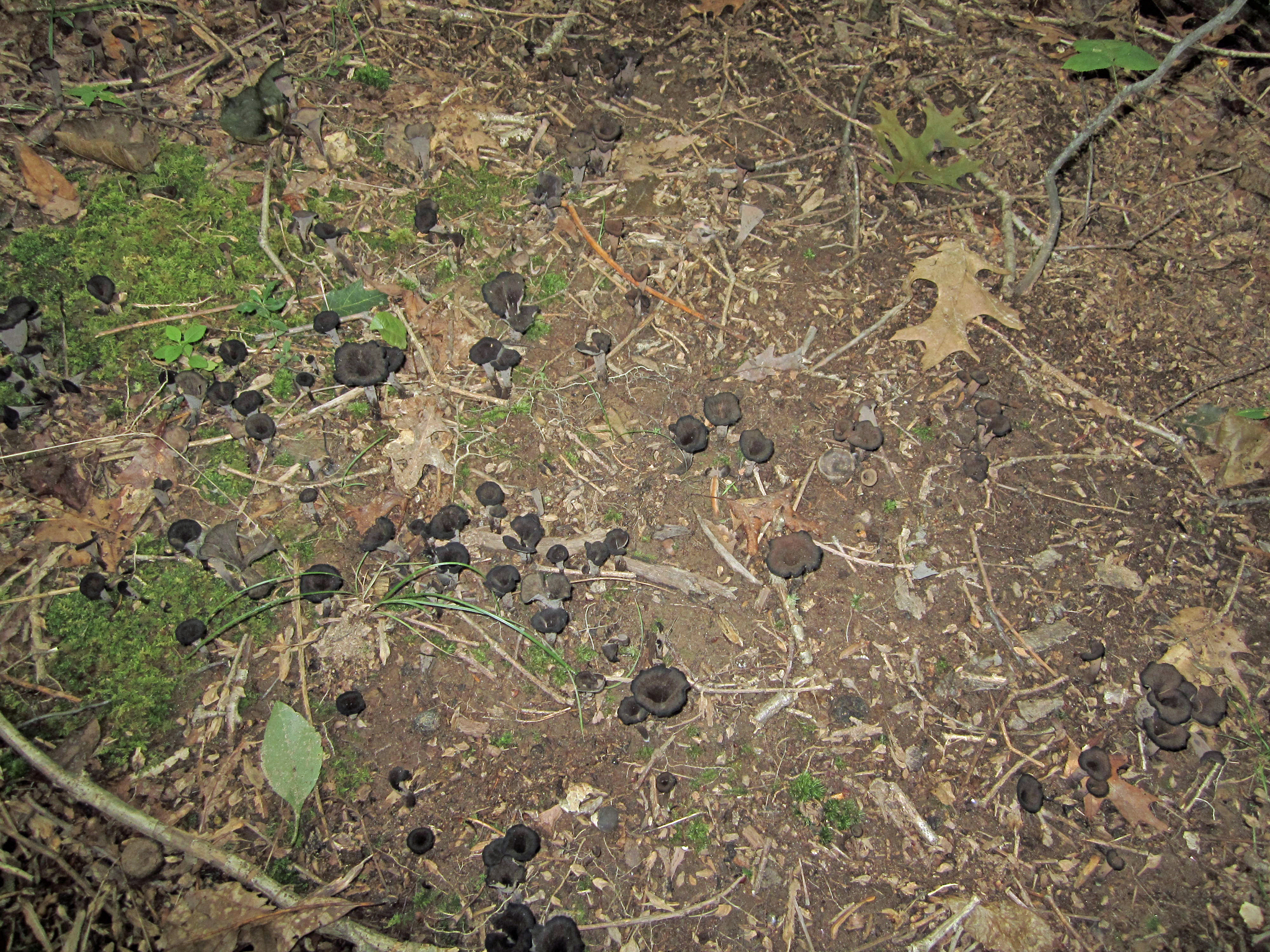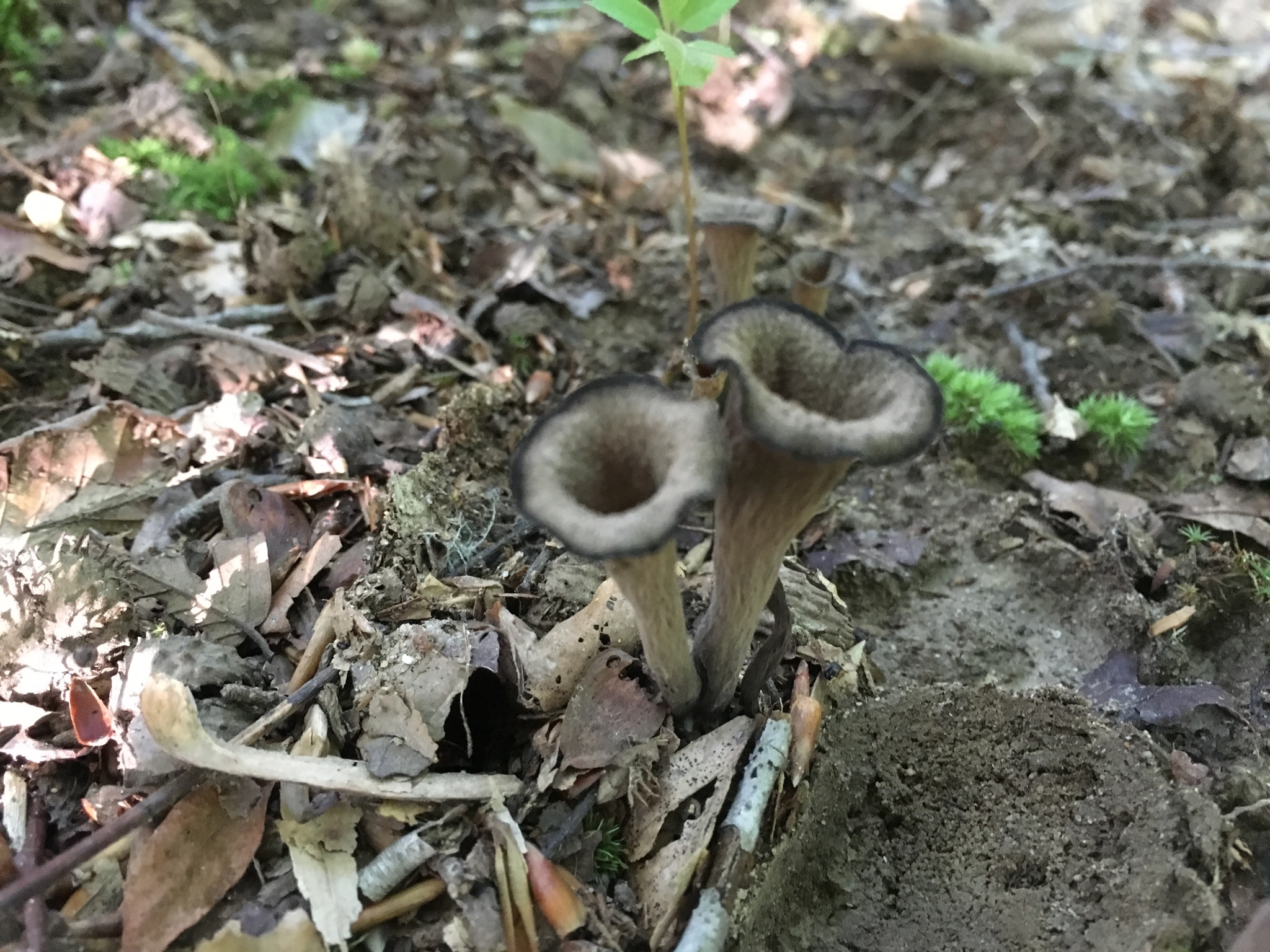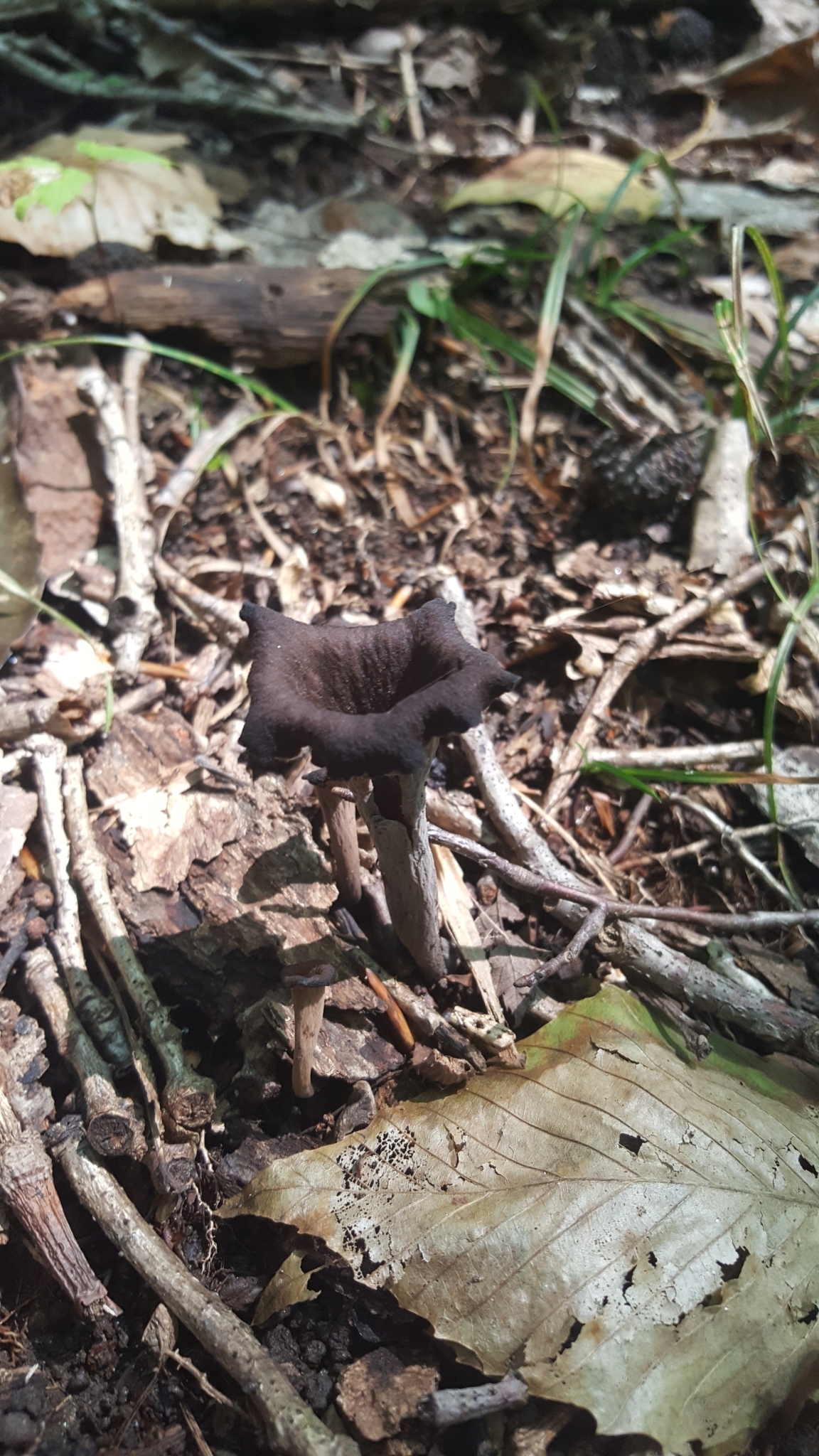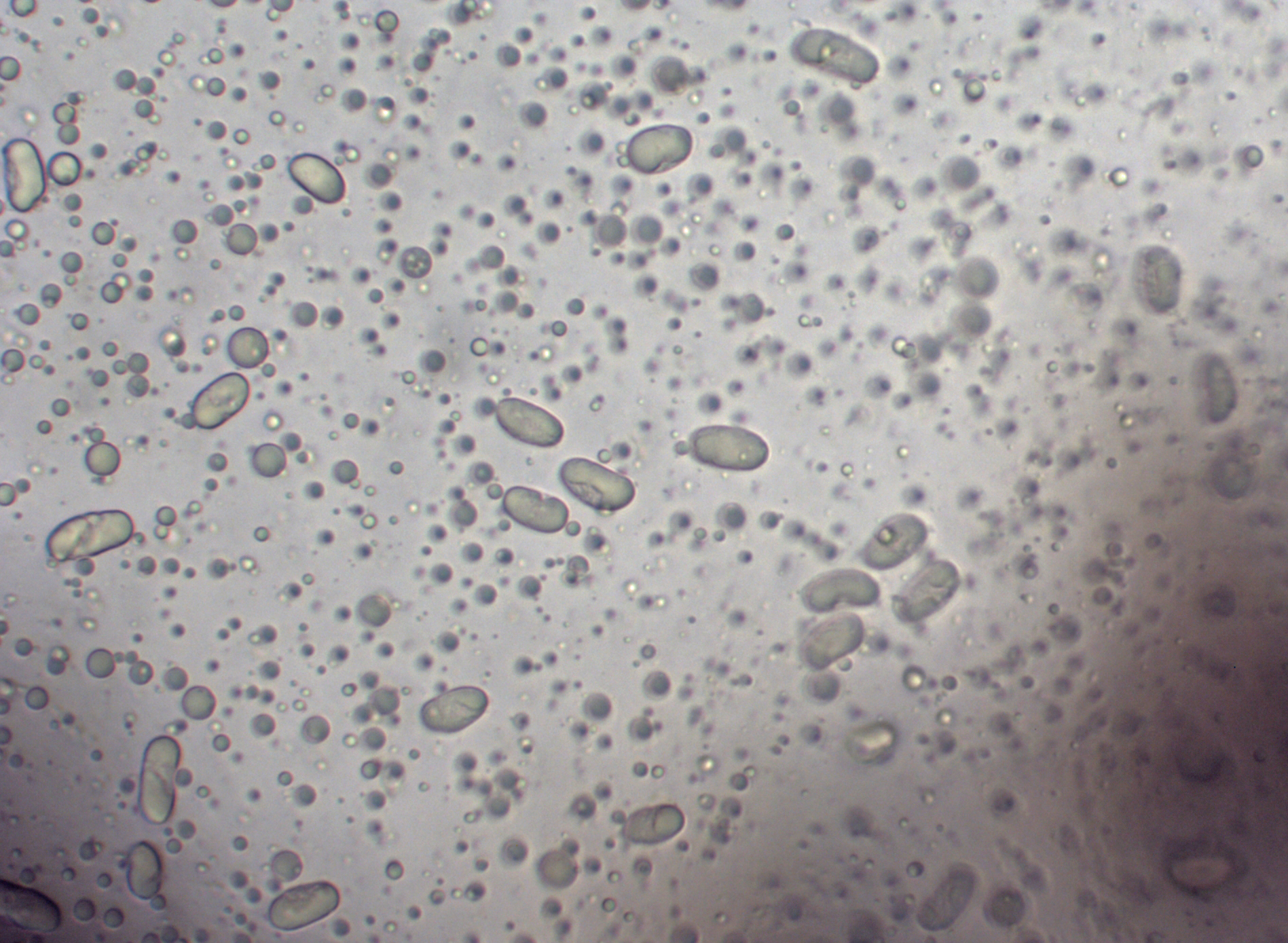Map Snapshot

















82 Records
Status
Found scattered or in groups on ground in forests, easily overlooked.
Description
Fruiting body: Grayish-brown or blackish with darker radiating fibers or tiny scales; funnel-shaped, deeply depressed; margin inrolled, wavy in age. Fertile surface has a salmon-buff tone with decurrent shallow ridges. Stalk: Black or dark-brown, often hollow (J. Solem, pers. comm.).
Seasonality Snapshot
Source: Wikipedia
| Craterellus fallax | |
|---|---|

| |
| Scientific classification | |
| Domain: | Eukaryota |
| Kingdom: | Fungi |
| Division: | Basidiomycota |
| Class: | Agaricomycetes |
| Order: | Cantharellales |
| Family: | Cantharellaceae |
| Genus: | Craterellus |
| Species: | C. fallax
|
| Binomial name | |
| Craterellus fallax A.H. Sm.
| |
| Craterellus fallax | |
|---|---|
| Ridges on hymenium | |
| Cap is infundibuliform | |
| Hymenium is decurrent | |
| Stipe is bare | |
| Spore print is yellow-orange | |
| Ecology is mycorrhizal | |
| Edibility is choice | |
Craterellus fallax is a species of "black trumpets" that occurs in Eastern North America. With a number of lookalikes in the genus, it is edible but not substantial.
Description
[edit]Craterellus fallax is grayish to blackish, skinny and 3–12 centimetres (1–4+1⁄2 in) tall. The inside is smooth and black when young, turning rough and gray with age. The flesh is brittle and grayish to blackish.[1]
The spore print is a pinkish yellow-orange.[1]
Similar species
[edit]In western North America, C. fallax is replaced by C. calicornucopioides.[1]
Craterellus fallax may be synonymous with the European species C. cornucopioides, which produces a white spore print.[2]: 391 [3]
A number of other species in the genus are similar.[1]
Distribution and habitat
[edit]The species occurs in Eastern North America.[1]
Ecology
[edit]C. fallax is mycorrhizal, forming associations with Tsuga and Quercus species, among others.[4]
Uses
[edit]It is a choice edible fungus,[5] although is not substantial.[6]
References
[edit]- ^ a b c d e Audubon (2023). Mushrooms of North America. Knopf. p. 99. ISBN 978-0-593-31998-7.
- ^ Dahlman, Mattias; Danell, Eric; Spatafora, Joseph W. (April 2000). "Molecular systematics of Craterellus: cladistic analysis of nuclear LSU rDNA sequence data" (PDF). Mycological Research. 104 (4): 388–394. doi:10.1017/S0953756299001380. Archived from the original (PDF) on 2007-08-04.
- ^ Kuo, M. (2003, June). The Cantharellus/Craterellus clade. Retrieved from the MushroomExpert.Com.
- ^ Matheny, Patrick; Austin, Emily; Birkebak, Joshua; Wolfenbarger, Aaron (July 2010). "Craterellus fallax, a Black Trumpet mushroom from eastern North America with a broad host range". Mycorrhiza. 20 (8): 569–575. doi:10.1007/s00572-010-0326-2. PMID 20602121. S2CID 22745958.
- ^ Phillips, Roger (2010). Mushrooms and Other Fungi of North America. Buffalo, NY: Firefly Books. p. 248. ISBN 978-1-55407-651-2.
- ^ Miller Jr., Orson K.; Miller, Hope H. (2006). North American Mushrooms: A Field Guide to Edible and Inedible Fungi. Guilford, CN: FalconGuide. p. 331. ISBN 978-0-7627-3109-1.
External links
[edit] Media related to Craterellus fallax at Wikimedia Commons
Media related to Craterellus fallax at Wikimedia Commons
